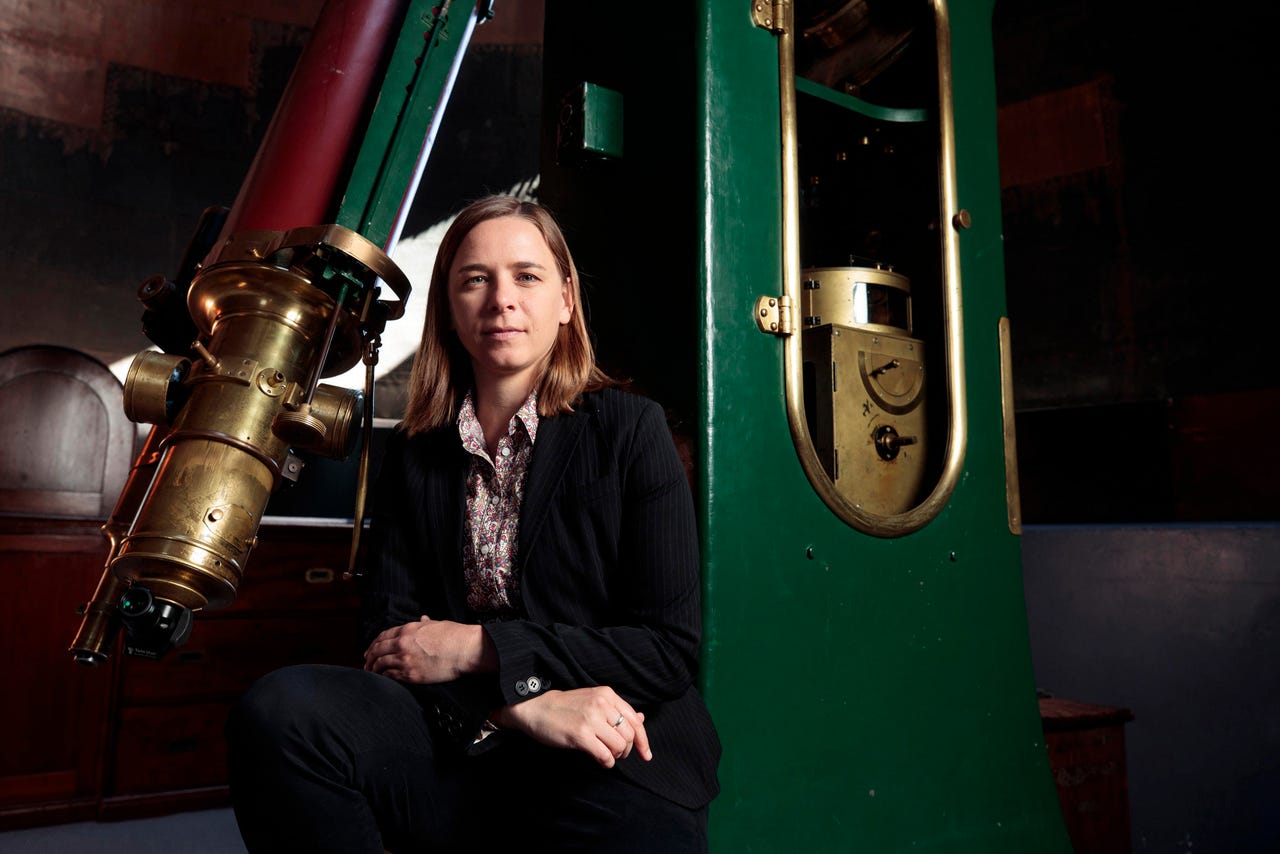Australia's Women in STEM Ambassador says the country's efforts to diversify is glacial


Professor Lisa Harvey-Smith
"It's glacial."
That's how Australia's Women in STEM Ambassador Lisa Harvey-Smith described Australia's progress when it comes to getting more girls and women to participate in male-dominated industries such as science, technology, engineering, and mathematics (STEM).
"It's like the melting of ice caps; it's just happening very, very slowly and nobody is noticing it," she said, speaking to ZDNet.
Based on the federal government's recently launched STEM Equity Monitor, the growth of female participation in STEM subjects at university in Australia, for instance, climbed at a "steady rate" of just 1%.
An astrophysicist professor, Harvey-Smith was appointed to the ambassador role in October 2018 as part of the Australian government's efforts to diversify the country's STEM sectors.
She emphasised that if Australia wanted to make a concerted dent in addressing the gender inequality issues currently faced by the STEM sectors, it would not be an overnight job.
"You can't expect miracles because we're talking about societal change, and about a whole host of areas of education to workplace practices changing and shifting," she said.
"Rather than focus on metrics, we're really trying to ensure this is a topic that leaders are talking about, and male leaders are aware of and talking about in their business.
"Once it becomes embedded as business as usual, boards are talking about it, CEOs are aware of it, then it's when we'll start to see that change happening."
To help businesses track how they are tackling STEM gender equality issues, the Office of the Women in STEM Ambassador has developed the national evaluation guidelines for projects that support girls' and women's participation in STEM.
"The guide is a way to figure out whether programs to help more women in STEM -- whether it's girls in STEM education or women into areas of leadership in STEM careers -- to figure out if those programs are working," Harvey-Smith said.
"It's really about evaluating. There are more than 330 different programs focused on getting more women into STEM and so the idea is to help organisations measure how effective their programs are being.
"If they're not measuring it, then it's not getting done effectively and we don't know if all the effort, time, and resources that are being put into this are being effective."
Ultimately though, for any real impact to take effect, Harvey-Smith said it would come down to a culture shift.
"If we look at other regions through Asia Pacific, such as countries like China and India, they're actually female-dominated in engineering," she said.
"In Australia, we have a different culture about who belongs in science, technology, engineering, and maths. Those STEM subjects are really hit by society's ideas what roles should be taken up by men and women, and Australia's society has some little way to go before it's a bit more sophisticated around the gender roles."
She believes "relentless pressure" could help push the change along.
"We know that for any social change to take place, it takes advocacy, it takes campaigning, it takes a sustained effort through government.
"The great thing is the government is supporting this Women in STEM program with the Women in STEM Ambassador, with a strategy, and it's really about keeping that pressure on and monitoring, and try and provide incentives for businesses to do the right thing," Harvey-Smith said.
She added that it's also about raising awareness among school students by working with teachers to create what she referred to as "STEM equitable classes" by removing biases and stereotypes, and introducing more female role models in teaching material.
"It's about getting the books that you use, the curriculum that you use. In New South Wales, the curriculum is highly, highly male-stacked when it comes to examples of real-world STEM examples, and we're looking at the curriculum like if this is what we're showing our kids no wonder why girls don't want to go into STEM," Harvey-Smith said.
"It's also about making sure those classroom resources, posters, examples of fantastic discoveries, and companies led by women, and getting those female role models into the classroom."
She also pointed out how the Office of the Women in STEM Ambassador plans to launch a national digital awareness campaign between July and August to help "reimagine what STEM means to young people, especially primary school ages, and to give examples of how STEM can change the world to get them in the right mindset that STEM can take them places".
Related Coverage
Three women in tech keeping the gender conversation going
It's not enough to just talk about gender equality and move on -- it needs to be an ongoing movement.
Diversity in AI improves, but has further to go, according to IBM survey
Confidence in AI varies by gender and country, but generally speaking AI pros have more faith in systems than the general population.
8 biggest misconceptions about women in technology (TechRepublic)
It's not about quotas or work-life balance.
Top 15 cities for women in tech(TechRepublic)
After considering the gender pay gap, income after housing, four-year employment growth, and tech jobs filled by women, these are the best locations.